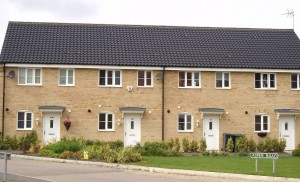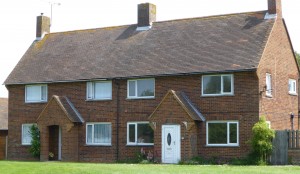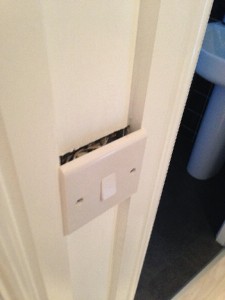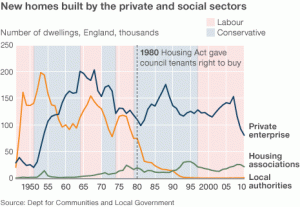The reduction in size of new homes being built in the UK has not gone unnoticed! In a recent issue of MoneyWeek, Merryn Somerset-Webb writes that the new homes currently being built are among the smallest in the world at an average of just 76 square metres, that’s 818square feet! In comparison the average UK house, excluding new builds, is 95.7sqm – 26% larger than a new build home today. How Britain’s new homes compare in size with other countries.
 Merryn thinks that the problem isn’t that the average size of British homes is too small… “it’s the way we share them out – too many older single people in the bigger homes and too many families in the smaller ones” as she would like to see capital gains tax extended for residential property. Merryn does however agree that Britain’s new homes are… “generally small and nasty” and stating that new homes are… “getting bigger everywhere else in Europe except here and in Sweden”
Merryn thinks that the problem isn’t that the average size of British homes is too small… “it’s the way we share them out – too many older single people in the bigger homes and too many families in the smaller ones” as she would like to see capital gains tax extended for residential property. Merryn does however agree that Britain’s new homes are… “generally small and nasty” and stating that new homes are… “getting bigger everywhere else in Europe except here and in Sweden”
Matthew Lynn also in MoneyWeek, acknowledges that new homes are small and getting smaller. Stating over time, “products get better and cheaper, our TVs are a lot bigger than they used to be and mobile phones can now do more than a desktop PC could just five years ago.” whereas “housing gets more expensive and worse. An Englishman’s home is meant to be his castle – but increasingly it is his rabbit hutch. Last month a survey by Building research & Information found half of all British houses failed to meet the minimum recommended living space requirement.” In any other industry you care to look at, overtime prices come down and quality improves, or a bit of both. A survey by insurer LV also shows UK new homes are shrinking down by 2sqm in the last 10 years.
So why are new homes so small? This is where I believe Matthew Lynn misses the point. He claims that it is because Britain has…“a chronic shortage of new homes” because… “the government refuses to make enough land available for new homes.” Meaning that in… “crowded city centres existing houses get divided up into smaller units, while in the suburbs as many new homes as possible get crammed into whatever land is made available.” Matthew’s “solution” is to increase the amount of land for development as it would result in holding back price rises and… “more importantly, it will mean better quality homes as well” More land will not result in larger new homes. It will not mean the quality of new homes gets better either. All it will do is increase profits for house builders as development land get cheaper. This is why house builders will never build enough new homes.









